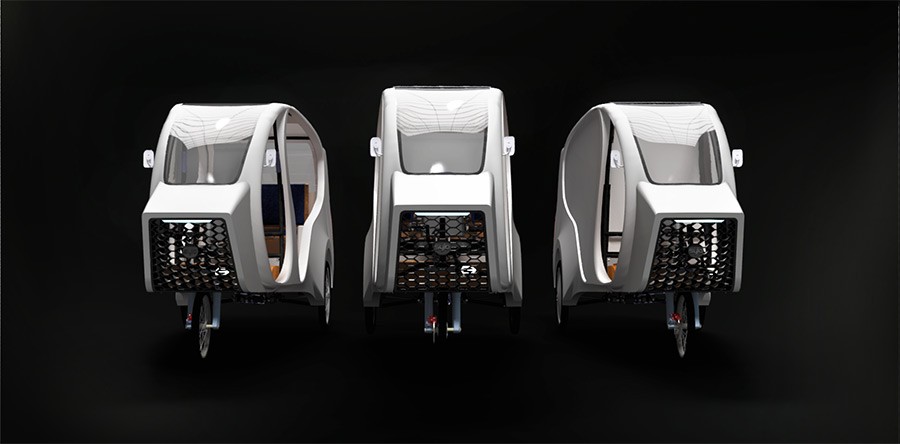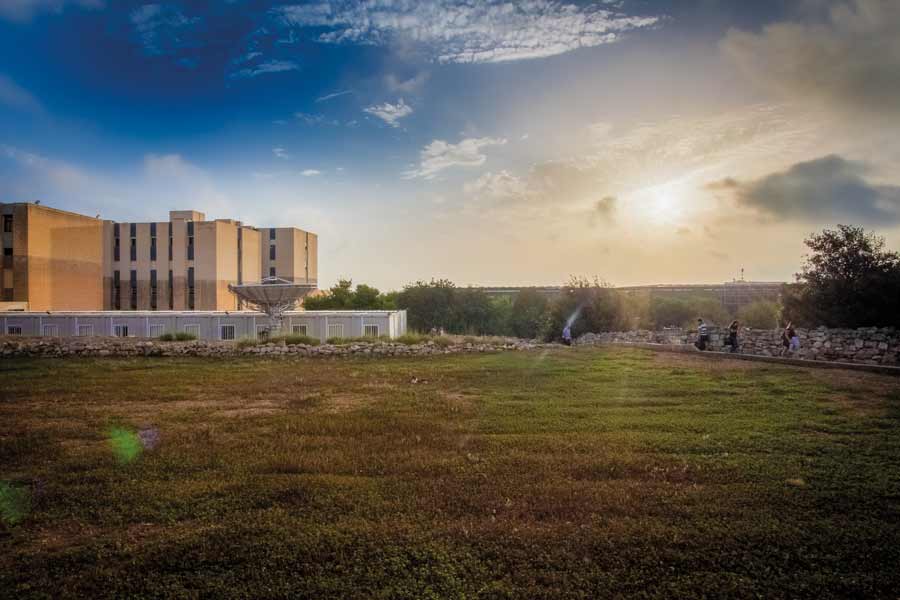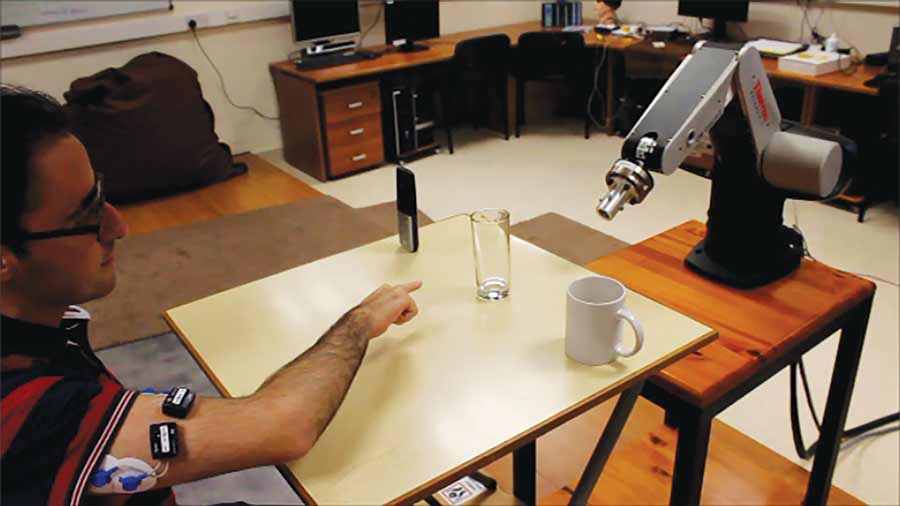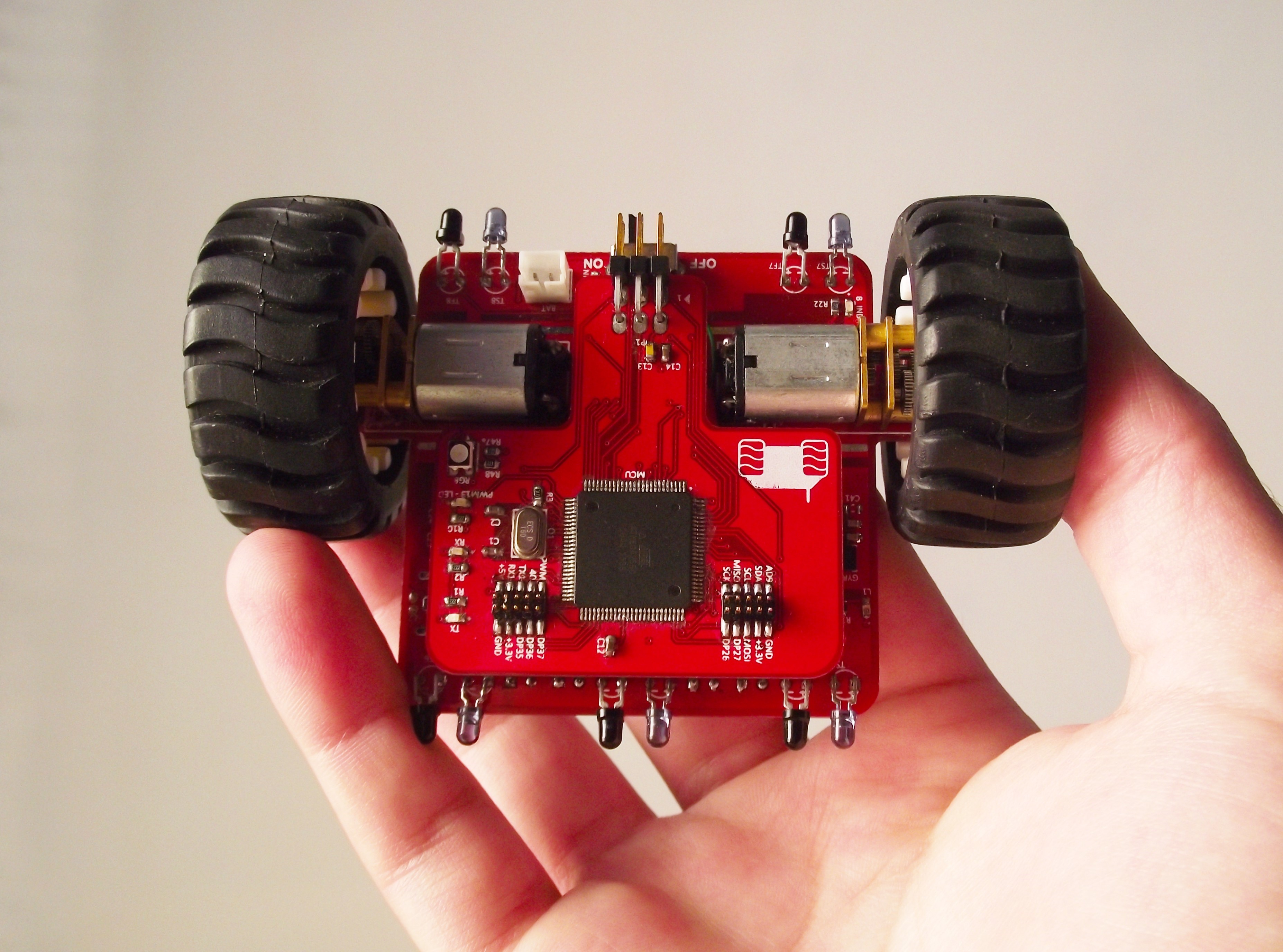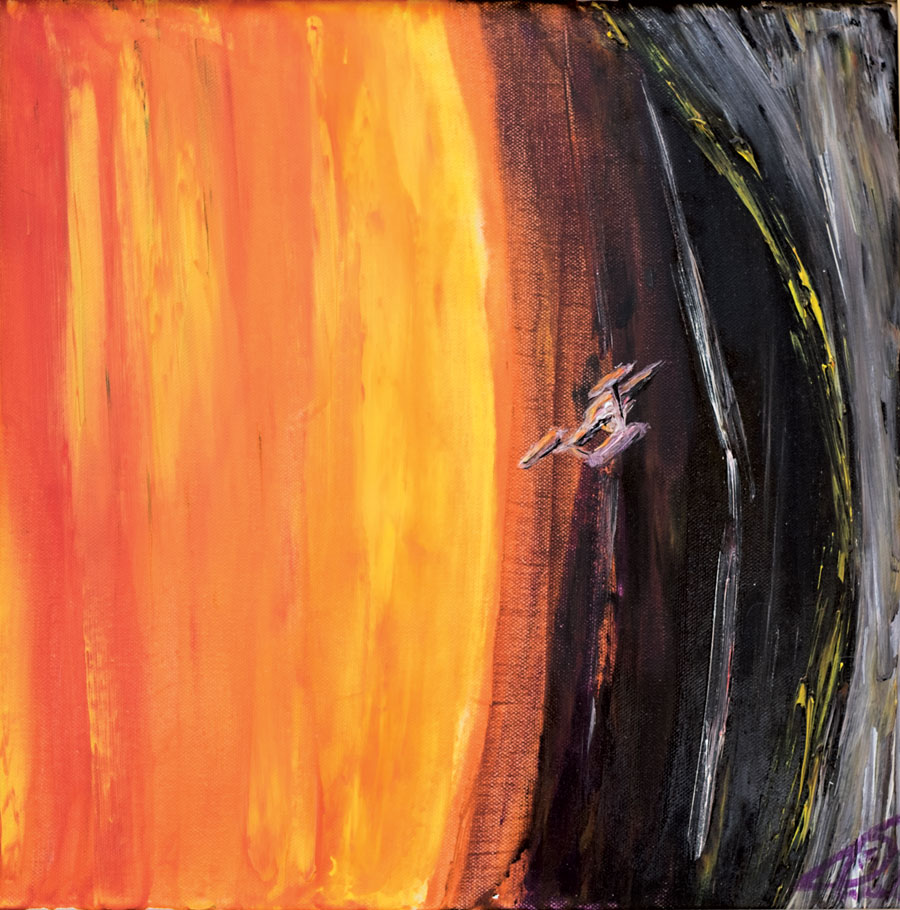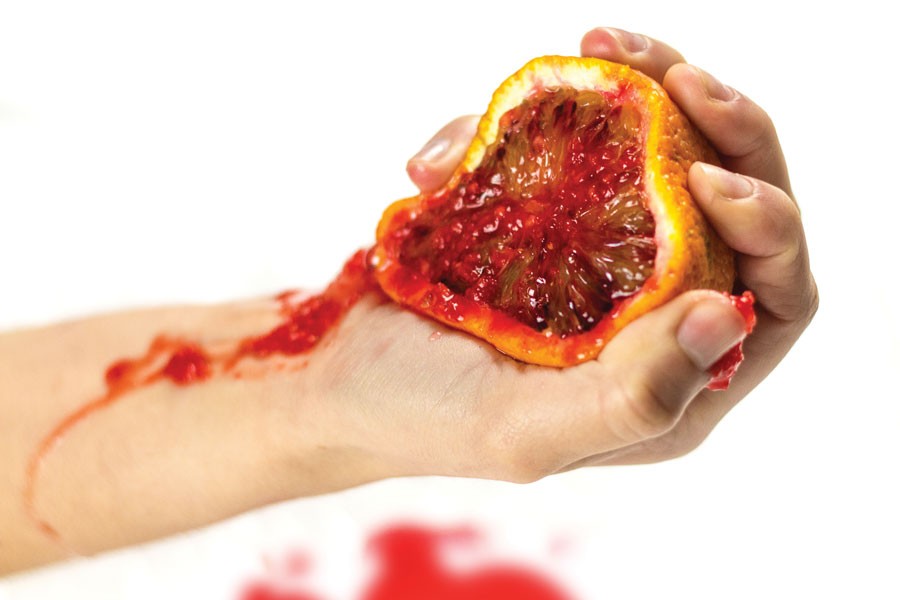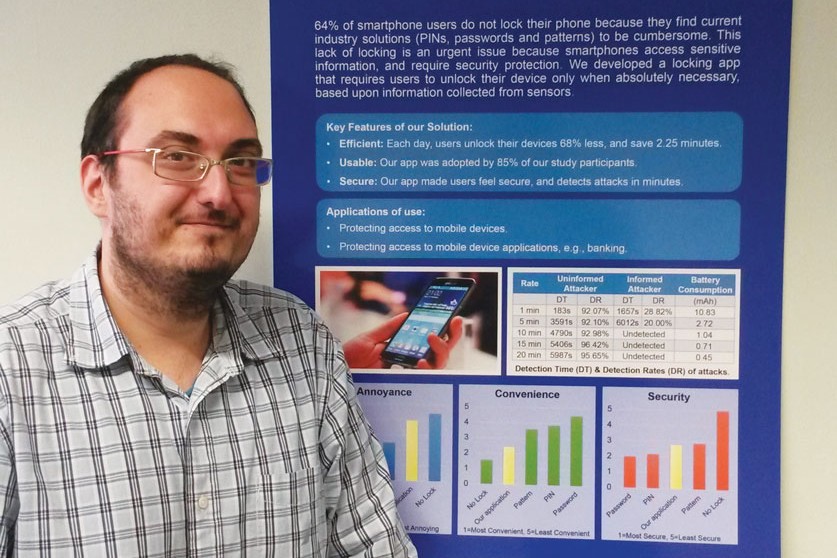Growing up in the digital age
With the rise of digital technology and its impact on early childhood development, young children and parents alike are stepping into unchartered territory. Hans-Joachim Sonntag talks to Prof. Charles L. Mifsud and Rositsa Petrova about their latest study in collaboration with the European Commission’s Joint Research Centre.
Sylo
Function, form, safety, and environment. SYLO is a family of hybrid cycle rickshaws that fulfils all four design pillars to deliver good performance and a smooth ride. SYLO is designed for short distances, catering to commuters and delivery services. What sets it apart from its counterparts is its mixed-propulsion technology, using both photovoltaic panels and pedal power. Adding to its ‘green’ points is the fact that recyclable plastics have been used for the body. This helped from an engineering perspective because it kept the vehicle light, allowing it to serve its function despite the difficult terrain it must operate in.
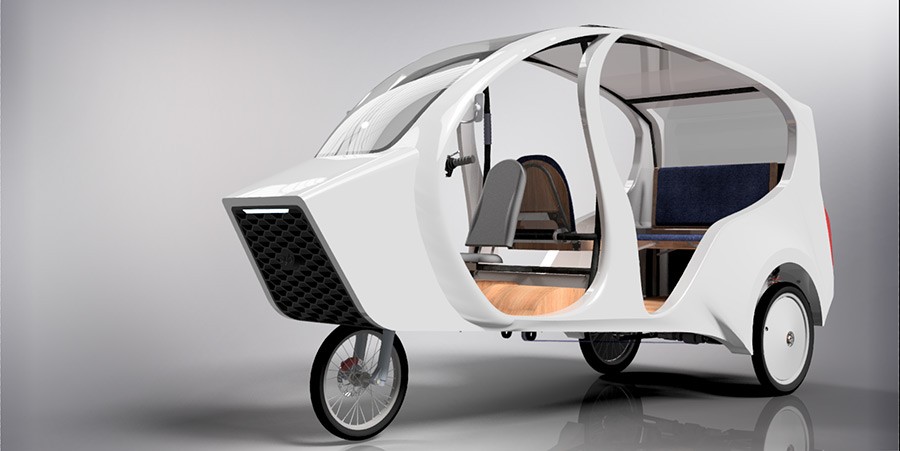
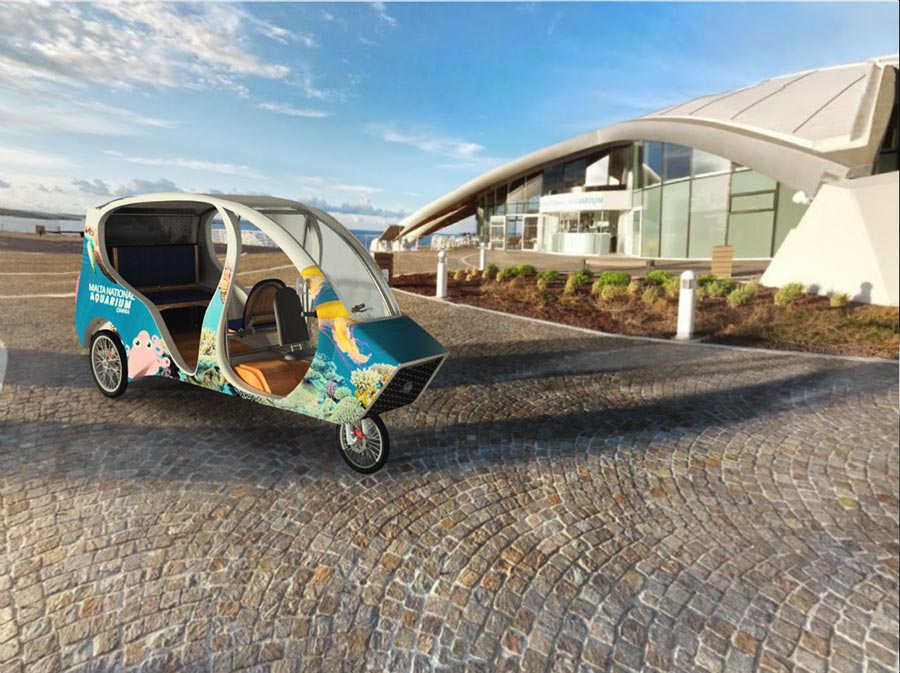
What sets it apart from its counterparts is its mixed-propulsion technology, using both photovoltaic panels and pedal power.
Form was an especially important factor in the design process. As the aim was to use this vehicle both within the historical context of the capital city, Valleta, and in cosmopolitan spaces such as Paceville and Bugibba, it was essential for the vehicle to complement its built environment, be it classical or contemporary. Towards this end, bold lines were used, making the vehicle look distinct without looking alien.
SYLO was the product of 10 mechanical engineering students supervised by academics from the Department of Industrial and Manufacturing Engineering, Faculty of Engineering, University of Malta as part of a third-year engineering design project.
Radio Telescope
Malta now has a radio telescope. This is a great step forward for the University of Malta as it helps speed up research.
The Department of Physics, Faculty of Science and the Institute of Space Sciences & Astronomy (ISSA; both at the University of Malta) have just acquired a 5.3m dual-reflector parabolic dish, as part of a European Regional Development Fund (ERDF) project to extend postgraduate research lab facilities. The radio telescope will now allow students and researchers to study celestial objects such as the sun or the centre of the galaxy through the radio waves they emit.
| Quick Specs |
| Dish diameter: 5.3m
Feed horns: L-Band and K-band Gain: 44 dBi @ 4GHz Observing modes: Continuum and line observation Total weight (including pedestal): 1900 kg Surface accuracy: 0.5mm PC-based automated control unit |
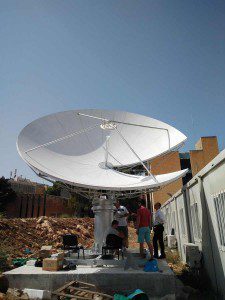
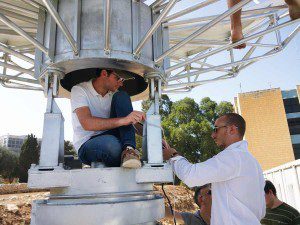 When pointed to a radio-loud celestial object (an object which emits large amounts of radio waves, such as the sun), the telescope will receive radio waves from these sources and convert them to voltage readings in the feed. The converted signal is then transmitted to a digitiser that converts these signals into bits and bytes.
When pointed to a radio-loud celestial object (an object which emits large amounts of radio waves, such as the sun), the telescope will receive radio waves from these sources and convert them to voltage readings in the feed. The converted signal is then transmitted to a digitiser that converts these signals into bits and bytes.
The digitised signals are then processed and broken down into the different frequency counterparts (similar to what a car radio does with the radio waves it receives from its antenna), which allows for continuum observation of the skies above. The telescope provides a test-bed for several research initiatives being undertaken at ISSA.
Some of its specialisations include improving the hardware and software processing back-ends for radio telescopes. The on-site telescope can speed up this sort of research immensely. ISSA is part of the largest radio telescope project in the world: the SKA (Square Kilometre Array).
Using Muscle Activity To Control Machines
Independent living is important to everyone. However, it is a known fact that there are many cases where physical problems prevent people from living without care. To help people regain some independence in their lives there are systems such as Human to Machine Interfaces (HMI). Systems such as these work by using biosignals like Electromyographic (EMG) signals that can be used to control assistive devices. However, some have their drawbacks: prosthetic arms, for instance, are one commonly used device that are at times abandoned due to a lack of dexterity and precision.
The problem is that most of these devices make use of sequential control, where only one function can be articulated at a time— meaning fluid, life-like motions are impossible. Now, most daily activities need simultaneous movement with multiple degrees of freedom. And it is this need that is pushing the creators of these devices to create simultaneous control to mimic real life movements.
Christian Grech (supervised by Dr Tracey Camilleri and co-supervised by Dr Ing. Marvin Bugeja) has developed a system which allows the control of the position of a robotic arm by using the muscle activity of a person. This consists of an HMI which continuously provides the shoulder and elbow joint positions using surface muscle movements. Grech tested the model to develop more freedom, which would lead to fluid movements. He investigated three types of system identification methods (state space models, linear regression models, and neural networks) to develop this relationship between muscle activity and corresponding joint angles. Additionally, seven different movements were tested in real-time using a robotic arm. Grech managed to develop a model that allows prosthetic arms to be used more naturally.
Of course, more research is needed to perfect this device. Ideally it would operate without delay and with minimal user discomfort. The Department of Systems & Control Engineering is carrying out more research to continue to improve the accuracy and robustness of such myoelectric (EMG) controlled devices.
This research was carried out as part of a Bachelor of Engineering degree at the Faculty of Engineering, University of Malta.
Robots in the Classroom
Reuben Ferrante, a University of Malta Engineering graduate and founder of eeRoot, has developed a small robot called eeMod. eeMods are built from only two modules stacked on top of each other. The bottom module is a ‘sensor hub’ that can sense the environment around it. It does so through connections (wifi, bluetooth, USB, microSD card slot), several sensors (gyroscope, accelerometer, light sensors), and a bit more wizardry. The second module is the controller, or brain. Its programmable controller is entirely compatible with the Arduino platform—a standard used worldwide. A set of wheels let’s the eeMod zip around.
Because the robot’s brain is empty by default, it can be hooked up to a computer to upload data. eeMods understand complex instructions and can utilise their senses to act accordingly. Users can start programming by using a very simple Arduino compatible drag and drop interface, and later make the transition to writing their own code. Having all that technology in one sleek package is one of the their unique selling points. Although eeMods were originally designed to streamline the scientific workflow in robotics, it is receiving a lot of attention from educational institutions. The robot’s simplicity allows it to be uses in schools giving children early insight into robotics. Ferrante has received multiple requests to provide a syllabus paired to the eeMods and tailored to Malta’s educational system.
Sphero is another miniature classroom robot, but looks very different from an eeMod. The company SPRK provides a near indestructible ball that can move around via various motors at its core. Recently the developers made it possible to programme Sphero through a smartphone app. For some quick fun the ball can also be remote controlled using the same app. It can move across all kinds of surfaces, and even through water—the perfect classroom bot.
The robots approach education from different angles and target different age groups. eeMods are the perfect device to delve into the technology behind robotics and learn programming algorithms early, while Sphero is a nice toy to play around with, enabling even technophobe people to experience the miracle that robots are.
With an increasing presence in everyday life robots are here to stay, in one form or the other. Allowing children to get familiar with the technology early helps teach lifelong skills and inspire them for the rest of their life.
For more information visit the official eeRoots website.
This article first appeared in ‘Sounds of Science’ in the Times of Malta, May 22 2016.
Science, art, academia: Star Trek
The Star Trek academic symposium will be held at the Faculty of ICT, University of Malta, on 15 and 16 July 2016. This event will be a platform for both academics from various disciplines as well as Star Trek fans to meet and explore the intersection between the humanities and the sciences. There will be inspirational presentations from national and international speakers, with the programme tailored to attract a wide audience. Contributors will be encouraged to explore contemporary issues in medicine, science, and technology as well as philosophical, psychological, and sociological issues connected with the science fiction entertainment franchise Star Trek.
A similar symposium was held in 2014 and which proved to be a worldwide first that successfully drew participation from many international scholars including American philosopher Jason Eberl, UK-based neonatologist and ethicist Neena Modi.
As a result of its success, this second event that marks the 50th anniversary from the launch of Star Trek: The Original Series is being organised. The event will be held under the auspices of the Humanities, Medicine and Sciences Programme (HUMS), a University of Malta programme set up to explore and encourage the interfaces between the humanities, medicine, and sciences. The Science Fiction Symposium will appeal to scientists and fans of science fiction alike..
For more information, visit the website.
Blood, Genes, and You
Over the course of nine months, an entire human body is sculpted from a few cells into a baby. The blueprint is the information written into our DNA. But what happens if there is a mistake in these blueprints? Decades worth of research carried out in Malta and abroad have aimed to understand how these errors lead to a disease common in Malta and prevalent worldwide.
Scott Wilcockson talks to Dr Joseph Borg (Faculty of Health Sciences, University of Malta) to find out more.
Transform everything
Digital technology opens up new possibilities for the visual arts. It allows artists to go beyond the traditional constraints of art. Sculpture is a centuries-old tradition reliant on the relationship between the artefact, and its material and space around it. In the past, sculpture was confined to being a physical act; it produced three-dimensional tangible objects that had little to do with the digital world.
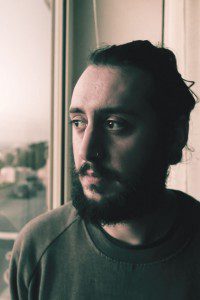
But this is just one side, if you would forgive the pun, to sculpture. Sculpture can be viewed as a mental process. It is the act of remediating things, or rather reassigning meaning to objects. Marcel Duchamp’s infamous sculpture ‘Fountain’ (1917) is perhaps a perfect example of this. Meaning is a social and cultural construct created through interactions by people with the objects and their environment. Since meaning is fabricated by society, then it stands to reason how the same objects have held multiple interpretations through time.
Matthew Galea (supervised by Dr Vince Briffa) explored these social and cultural constructs to create novel artworks. To do so, he employed skills from different disciplines including drawing, painting, sculpture, music, and the other performing arts. But instead of expressing them individually he fused them into one art form. The various art forms could be experienced collectively, for example, as a musical instrument, or a painting, or even through movement.
The multidisciplinary approach also allowed Galea to investigate chemistry and physics as ways of generating content and engaging with the artefact. Galea produced an art installation that made use of the night sky, which itself has held multiple interpretations by humankind throughout time. The artwork transformed movement into audio and visual content.
Thanks to his research, Galea helped show how hyperdisciplinary artefacts that fuse various art forms are possible through digital technology. Computers can transform data into an image, audio, or text. Software can transform anything. Digital technology can enhance artworks’ interactivity with the audience, making visitors part of the artwork.
To see the project’s outcome visit the website.
This research was performed as part of a Master of Fine Art in Digital Art which Matthew Galea completed at the Faculty of Media and Knowledge Sciences (MaKS), University of Malta. It is partially funded by Master it! scheme. This scholarship is part-financed by the European Union—European Social Fund (ESF) under Operational Programme II—Cohesion Policy 2007–2013, ‘Empowering People for More Jobs and a Better Quality of Life’.


